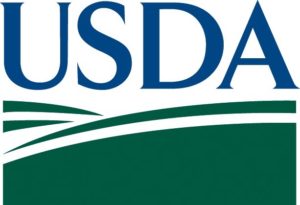The USDA has delayed making a decision on implementation of its poultry inspection modernization plan called HACCP-based Inspection Models Project (HIMP). Back in January, Agriculture Secretary Tom Vilsack held a press conference to announce the changes.
 The proposal has met with a lot of backlash from consumer groups and food safety advocates. So the USDA has extended the comment period for the proposed change to accommodate the concerns of those groups.
The proposal has met with a lot of backlash from consumer groups and food safety advocates. So the USDA has extended the comment period for the proposed change to accommodate the concerns of those groups.
Two points of the HIMP proposal have garnered the most criticism:
- USDA inspectors will no longer be checking the birds for visual defects; that will now be performed by plant employees.
- Line speeds will increase from approximately 120 birds per minute to 175 birds per minute or more.
The USDA’s Food Safety and Inspection Service (FSIS) has responded to those criticisms by saying that under the current plan, on-line inspectors “conduct activities that do not have a direct impact on public health. If the proposal is finalized, and the establishment conducts sorting activities, the only birds presented to the carcass inspector would be those that are likely to pass inspection.”
Regarding the increase in line speeds, FSIS stated, “septicemic/toxemic birds exhibit signs on the outside of the carcass, so there is no need to look at the viscera.” The agency also stated that “the off-line visual inspector would be checking carcasses to verify that they do not contain food safety-related contamination or defects.”
FSIS also said that “analysis of HIMP data shows that carcass inspectors are able to detect fecal contamination and septicemia/toxemia at line speeds of up to 175 birds per minute for young chickens.” And “FSIS did consider potential effects on [worker] safety. The Agency is prepared to address worker safety within the bounds of its regulatory authority and will coordinate with the Occupational Safety and Health Administration (OSHA) as the regulatory process moves forward.”
Food Poisoning Bulletin asked Joseph Gonzales, staff dietitian for the Physicians Committee for Responsible Medicine about these changes. He said, “we slaughter 1 million chickens per hour in the United States. Lines are moving fast and inspectors have many critical points to monitor. Contaminated poultry products now cause approximate;y 1.5 million illnesses, 12,000 hospitalizations, and 180 deaths each year in the United States. Reducing monitoring could boost these numbers.”





Coming from Private industry, and now and now with FSIS, I’ve seen little to no mention of the pressure put on Floor Managers and inplant line butchers to meet established quotas. Now we are talking of job preservation. In my youth I was guilty of reacting to this pressure by passing out substandard product through a Drive Thru Window. This included shakes from a machine that was not sanitized at required intervals to save labor costs. Spoiled patties were reported by employees and ignored as I felt they were NOT THAT SPOILED. I’ve seen returned packages simply repackaged and put back into commerce in wholesale distributors warehouses. Working as a Butcher, I saw pork butts rinsed to remove slime. I’ve seen beef patties dipped in vinegar to hide spoilage. I’ve seen after hours production without the benefit of FSIS Inspection. Once using a meat slicer I removed the tip of my finger. As I was tending to the wound, the meat was wrapped and sold to a retail customer. I’ve seen employee restrooms without soap, towels and hot water. I’ve worked at an I-house where the owner regularly drives and idles his vehicles in the reinspection area. This same facility has a shop for motorcycle repair in the same area. I have a Supervisor who allowed refusedproduct to be re-exported to another country in violation of the Code of Federal Regulations. I’ve seen damaged shipping containers with exposed product hidden deep in a pallet to hide it from the Inspector. I’ve seen Plant Sympathetic FSIS supervisors chastise Inspectors for halting or slowing production due to poorly dressed animals on tthe kill floor. Subsequent to that the Inspector gets a reputation as a troublemaker and is passed for promotion.
It’s not a perfect world and it seems that some want to make it worse to save the Govt. and Private Industry a few bucks and ignore the reality of greed in human nature.
FSIS data shows that online HIMP inspectors are able to find/stop only 1 of every 200 septicemic/toxemic birds, and only 1 of every 89 birds with fecal contamination, that are on their way down the production line to consumers. And THAT is the agency’s version of “able to detect”! Being “able to detect” such a small fraction of dangerous food is entirely inadequate. The devil is really in the details of this proposal, and that is only one of the little details the agency hopes will be missed by consumers who don’t have time to read the hundreds of pages of documents that make up this fraud on the public.